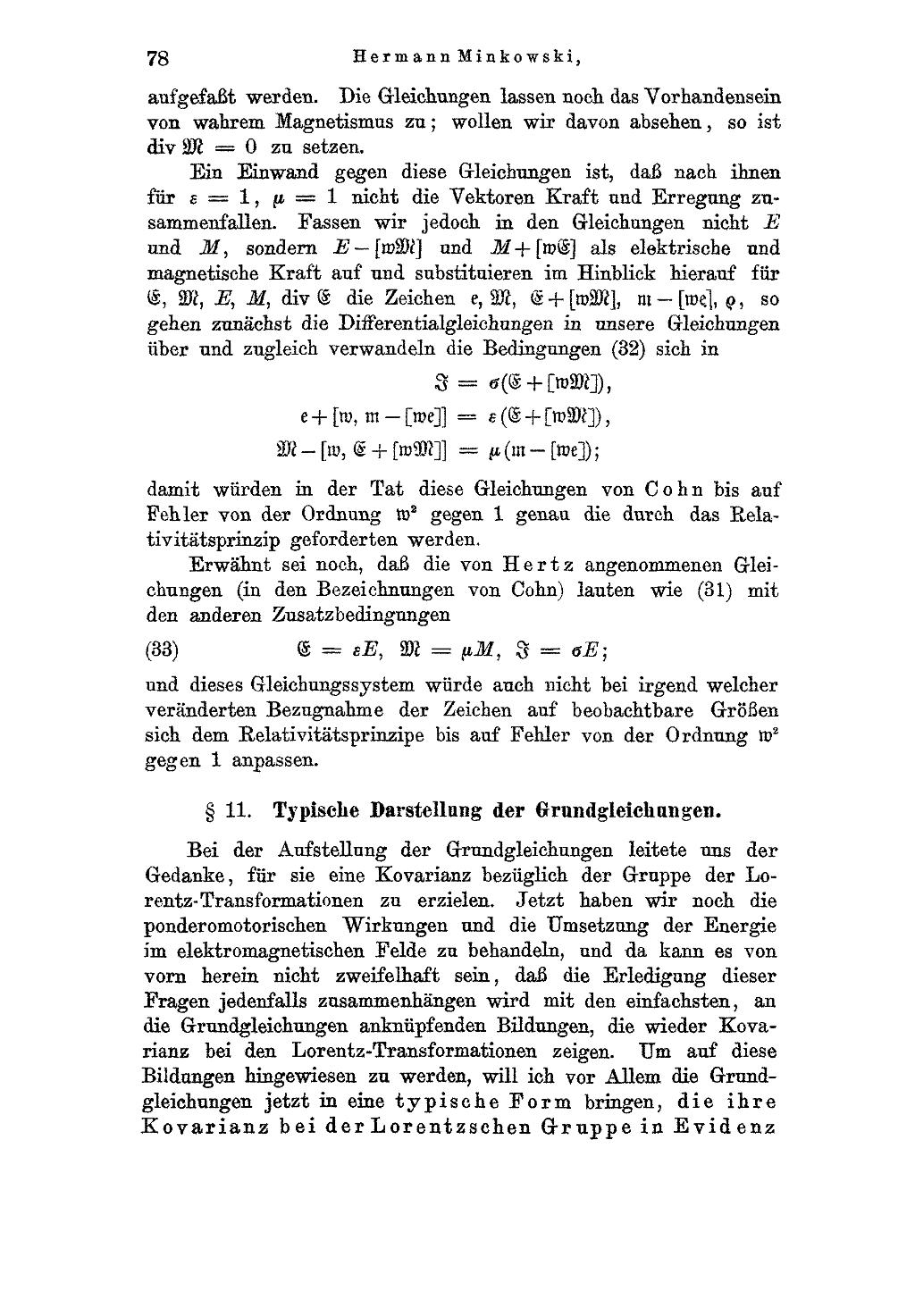The equations also permit the existence of true magnetism; if we do not take into account this consideration, is to be put = 0.
An objection to this system of equations, is that according to these, for , the vectors force and induction do not coincide. If in the equations, we conceive E and M and not and as electric and magnetic forces, and with a glance to this we substitute for the symbols , then the differential equations transform to our equations, and the conditions (32) transform into
| ; |
then in fact the equations of Cohn become the same as those required by the relativity principle, if errors of the order are neglected in comparison to 1.
It may be mentioned here that the equations of Hertz become the same as those of Cohn, if the auxilliary conditions are
| (33) | ; |
§ 11. Typical Representations of the fundamental equations.
In the statement of the fundamental equations, our leading idea had been that they should retain a covariance of form, when subjected to a group of Lorentz-transformations. Now we have to deal with ponderomotive reactions and energy in the electro-magnetic field. Here from the very first there can be no doubt that the settlement of this question is in some way connected with the simplest forms which can be given to the fundamental equations, satisfying the conditions of covariance. In order to arrive at such forms, I shall first of all put the fundamental equations in a typical form which brings out clearly their covariance in case of a Lorentz-transformation.


![{\displaystyle E-[{\mathfrak {wM}}]}](https://wikimedia.org/api/rest_v1/media/math/render/svg/3424a529ff471d30b4d26e7401fb68f248d4a91c)
![{\displaystyle M+[{\mathfrak {wE}}]}](https://wikimedia.org/api/rest_v1/media/math/render/svg/8c1a9fadde14f67a8fda37f1e685b816c44a1cc6)

![{\displaystyle {\mathfrak {e,M,\ E}}+[{\mathfrak {wM}}],\ {\mathfrak {m}}-[{\mathfrak {we}}],\ \varrho }](https://wikimedia.org/api/rest_v1/media/math/render/svg/66a6485fbfe02c204e56f1a8275b213f5dc58f75)
![{\displaystyle {\begin{array}{rl}{\mathfrak {F}}&=\sigma ({\mathfrak {E}}+[{\mathfrak {wM}}]),\\\\{\mathfrak {e}}+[{\mathfrak {w,m}}-[{\mathfrak {we}}]]&=\epsilon ({\mathfrak {E}}+[{\mathfrak {wM}}]),\\\\{\mathfrak {M}}-[{\mathfrak {w,\ E}}+[{\mathfrak {wM}}]]&=\mu ({\mathfrak {m}}-[{\mathfrak {we}}])\end{array}}}](https://wikimedia.org/api/rest_v1/media/math/render/svg/77379e96c7379830d551dcf2496729f95dfda207)


